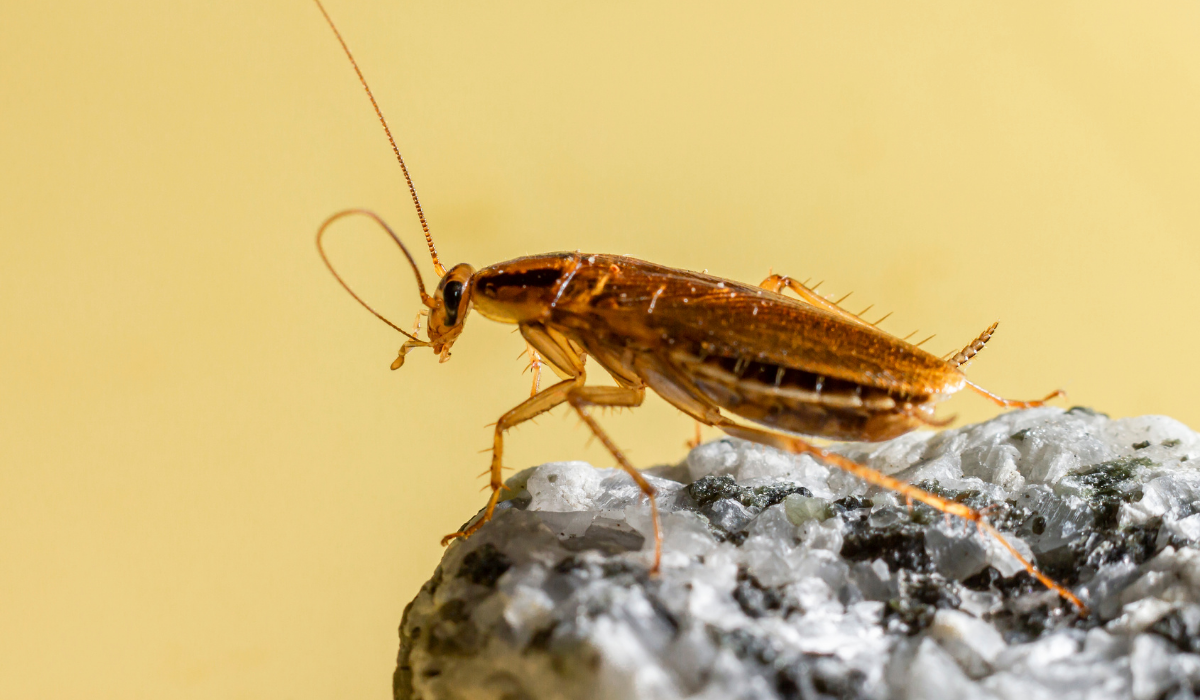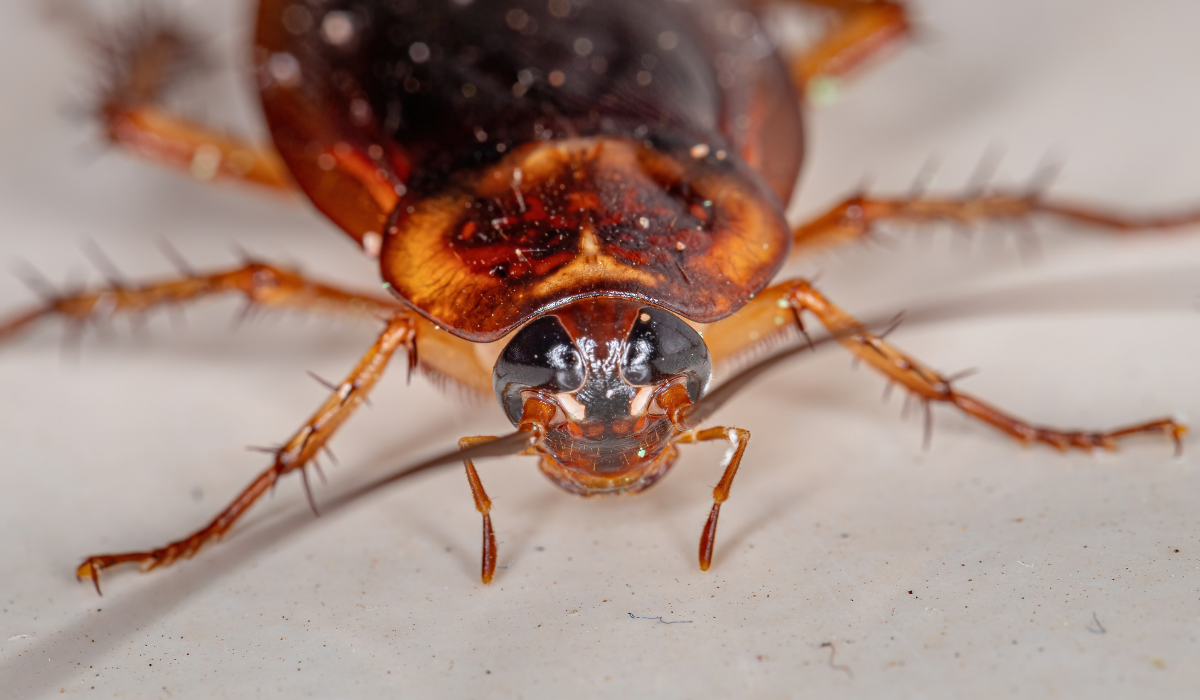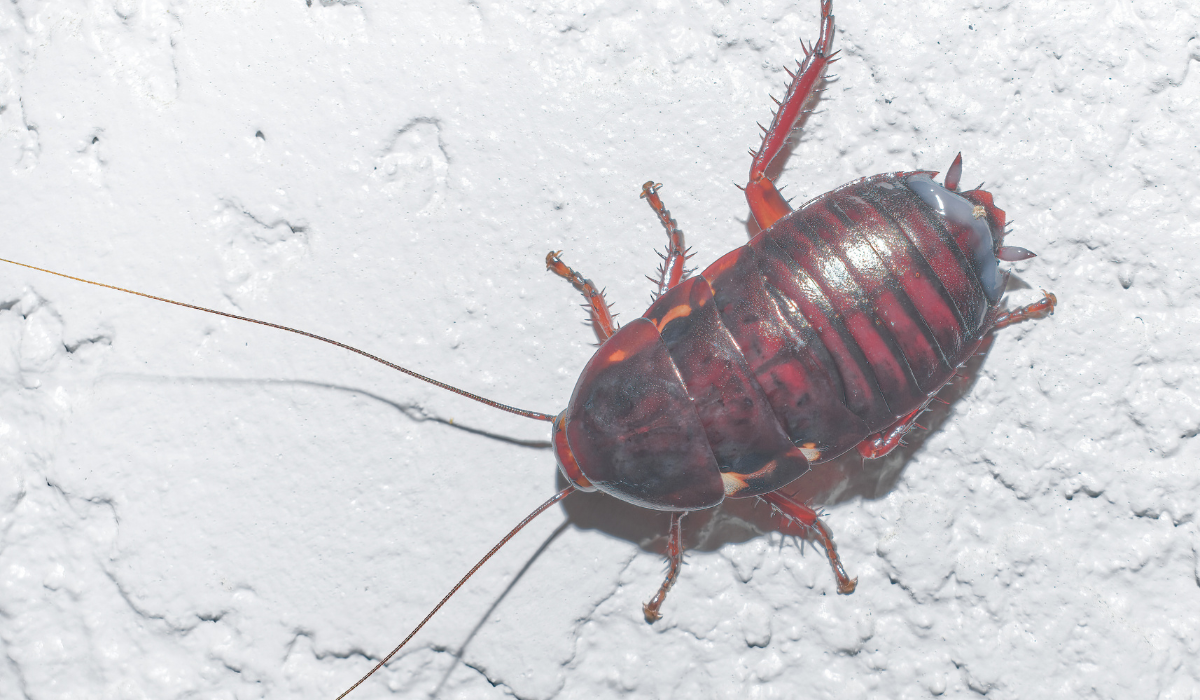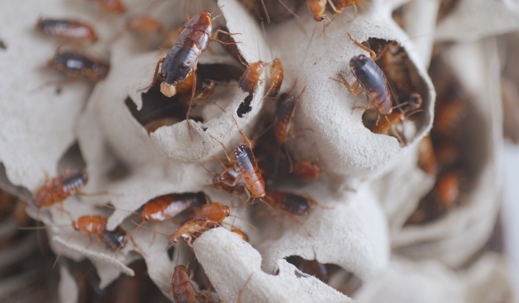Spotting baby cockroaches in your Florida home? Here’s what it means
Seeing baby cockroaches in your Florida home means one thing: you already have an infestation, and you must act quickly. The presence of nymphs can only mean that they’ve recently hatched from cockroach eggs somewhere in your home. Even spotting one or two is a warning sign that a larger roach infestation is hiding out of sight.
Florida’s hot, humid climate provides the perfect environment for roaches to thrive year-round. From Tampa kitchens to South Florida garages and attics, homeowners regularly encounter cockroach species that quickly multiply once they find food, water, and shelter inside. Cockroaches aren’t just annoying; they threaten both your home and your health.
In this guide, we’ll cover what baby cockroaches mean, the most common species in Florida, where they hide, why they’re a health risk, and how to get rid of them.
Key takeaways:
- Baby cockroaches, or nymphs, mean that adult cockroaches are actively breeding. Your home is at risk of having a roach infestation if you see them scurrying about.
- Florida is home to a variety of cockroaches. Some common cockroach species include German, American, brown-banded, and smoky brown cockroaches. Each type of cockroach produces nymphs differently.
- Baby roaches contaminate surfaces. They can spread bacteria like Salmonella and worsen allergens.
- Professional pest control services give homeowners the most reliable solution to eliminate roach infestations.
What baby cockroaches in Florida homes mean
When you see baby cockroaches crawling across your kitchen floor or scurrying under a countertop, you’re not just dealing with a few stray bugs. Their presence proves that adult roaches have already found entry points into your home and laid egg cases.
Each egg case can hatch dozens of nymphs. Within just a few weeks, they mature and start reproducing, causing the population to grow fast. A small number of baby cockroaches today can lead to a full roach infestation if you don’t take action immediately.
As a homeowner, it’s essential to recognize that nymphs indicate adult cockroaches are breeding in hidden areas, such as your attic and crawl space. You’ll usually see them only after they leave their nest. The space behind your appliances can also become a cockroach’s hiding spot.
For Florida homeowners, spotting baby cockroaches is a red flag. If you don’t take action quickly, you may soon face hundreds of roaches, with each leaving behind droppings, shed skins, and allergens.
The most common cockroach species in Florida
Cockroaches are some of the most common pests in Florida. The state’s warm, humid weather makes it easy for its numbers to grow. Because of this, Florida has one of the highest cockroach populations in the country. Understanding which species you’re dealing with helps you control them effectively. Here are some of the most common cockroach species you may encounter:
German cockroaches

German cockroaches cause most indoor infestations in Florida. Baby German roaches are tiny and dark brown. They often cluster in kitchens and bathrooms near food and water sources.
The rapid reproduction of German cockroaches makes them one of the hardest species to eliminate without professional pest management.
One female can carry egg cases with up to 40 nymphs, producing several generations in a year. Left unchecked, thousands can infest your home. In apartments or condos, German cockroaches often spread from unit to unit through shared walls and plumbing lines.
American cockroach

American cockroaches, also known as palmetto bugs, stand out with their reddish-brown color and size. These roaches are among the largest cockroach species in Florida homes. Their nymphs start light brown and gradually darken as they mature. They thrive in damp, dark places like sewers, attics, and garages. They often enter homes in search of food or shelter.
Florida’s climate is ideal for these pests, as they prefer warm, humid areas. American cockroaches are also frequently spotted in large commercial buildings, restaurants, and warehouses. However, they can also invade homes, especially older houses with crawl spaces.
Brown-banded cockroaches

Brown-banded cockroaches prefer drier areas compared to German or American roaches. Their baby cockroaches often hide in crawl spaces, behind picture frames, or inside cardboard boxes stored in attics. Since females scatter their egg cases across many hidden areas, brown-banded cockroach infestations spread quickly and will require detailed treatment plans.
Unlike German cockroaches that stay near kitchens, brown-banded roaches often show up in bedrooms, closets, or living rooms. Their choice of hiding spots makes them more challenging to find.
Smokybrown and Australian cockroaches
.2412032201339.png)
From afar, smoky brown cockroaches and Australian cockroaches may look similar. However, smoky brown cockroaches are dark and shiny. On the other hand, Australian cockroaches are slightly smaller with yellow markings.
Both are outdoor species that live in mulch, leaf litter, and damp areas around homes. However, they may lay eggs indoors. Their nymphs usually hide near water sources or inside garages.
These species are strong fliers. Australian cockroaches can enter your home through open windows and doors at night, drawn to lights. You can control them through regular outdoor maintenance.
Florida woods cockroach

Florida woods cockroaches are large, slow-moving cockroaches that prefer outdoor environments. They release a strong odor when threatened. Although they are less likely to infest homes compared to German cockroaches, their nymphs can appear inside garages or storage spaces.
They often live in mulch piles or near woodpiles, so homeowners may bring them inside accidentally when carrying in firewood or moving outdoor furniture.
Where baby cockroaches hide inside your home
Roaches are experts at squeezing into tight spaces. Their antennae help them sense food, warmth, and safe hiding spots. Because of their tiny size, baby cockroaches slip into cracks even more easily.
In Florida homes, you’ll often find them in:
- Kitchens: Inside cabinets, near sealed containers, and under sinks where water drips from faucets. Nymphs often cluster near dishwashers and refrigerators where warmth and moisture combine.
- Bathrooms: Behind toilets, around pipes, and under counters. Even a small drip or condensation can sustain them.
- Garages and attics: Inside cardboard boxes, crawl spaces, and near stored mulch or firewood. Garages with clutter give nymphs multiple hiding spots.
- Behind appliances: Around ovens, refrigerators, and washing machines, where crumbs and grease build up unnoticed.
If you see baby cockroaches during the day, it usually means the infestation has grown so large that hiding spots can’t contain them anymore.
Why baby cockroaches are a health concern
Baby cockroaches can’t reproduce yet, but they are still dangerous. They bring health problems that you should not ignore.
- Allergens: Roach droppings, shed skins, and saliva worsen allergy and asthma symptoms, especially in children and seniors.
- Bacteria: Cockroaches crawl across garbage, sewers, and pet food before moving onto countertops. Where roaches crawl, they can spread pathogens like Salmonella and E. coli.
- Contamination: Even sealed food containers can become contaminated if roaches crawl across the outside packaging and transfer bacteria.
- Fast growth: Nymphs mature into adults within weeks. Each new adult female produces more cockroach eggs, creating a constant cycle of infestation.
Unlike termites, which cause structural damage, roaches directly affect your living environment by contaminating food and surfaces. Both pests, however, require fast intervention.
How to get rid of baby cockroaches in Florida homes
You can’t eliminate baby cockroaches with a quick spray. The most effective approach combines prevention, exclusion, and professional treatment.
Remove food and water sources
Roaches will eat anything and everything. They can survive on crumbs, grease, and even pet food. You must store food in airtight or sealed containers to keep it from spoiling. Wiping down your countertops daily and not leaving dirty dishes in your sink overnight can also help reduce the risk of food contamination.
You also need to fix leaky faucets and use dehumidifiers in damp areas like crawl spaces to prevent water from accumulating.
Block hiding spots and entry points
Seal cracks, gaps, and openings around plumbing lines and baseboards with caulk. Install weather stripping on doors and windows to block entry points. Reducing clutter, especially cardboard boxes in garages or attics, also takes away hiding spots for nymphs.
Call a professional pest control company
DIY sprays or boric acid may kill some roaches, but they won’t reach egg cases hidden deep in walls or attics. A trained exterminator can identify the cockroach species, locate cockroach eggs, and apply treatments that stop infestations at every stage. Professional pest control removes both baby and adult cockroaches and keeps them from coming back.
Preventing future roach infestations in Florida homes
Keeping roaches out of your home takes consistent effort. Follow these prevention tips to stop infestations before they start:
- Clean up regularly: Vacuum floors, wipe down surfaces, and remove food scraps daily.
- Store food properly: Always keep dry goods and pet food in sealed containers. Roaches can chew through paper and thin plastic bags.
- Maintain your yard: Remove standing water, trim mulch beds, and keep wood piles at least 20 feet away from your home.
- Check attics and garages: Inspect crawl spaces, attics, and garages for droppings or egg cases. Early detection makes control easier.
- Schedule routine pest management: Ongoing treatments from a trusted pest control company keep infestations from returning.
Making the right pest control choice for your Florida home
Baby cockroaches are often just the first sign of a much bigger problem. The longer they’re left alone, the harder and more costly the infestation becomes. That’s why the smartest move is to stop them before they spread further.
At Native Pest Management, we focus on long-term protection. Our experts don’t just treat what you see; we prevent future outbreaks with targeted, family- and pet-safe solutions.
Ready to take back your home? Contact us today and let us keep cockroaches out for good.
FAQs
Why do I keep finding baby cockroaches in my kitchen?
Baby cockroaches in kitchens mean adults are nesting nearby. Crumbs, grease, and moisture attract them. Sealed containers and pest control services help prevent infestations.
Are baby cockroaches dangerous?
Yes. Baby cockroaches can’t reproduce yet, but they spread bacteria and worsen allergies. Their presence often means a full infestation is already underway.
Can I get rid of baby cockroaches without an exterminator?
You can reduce food and water sources, but DIY sprays don’t eliminate cockroach eggs. Professional pest control services give homeowners the best long-term solution.
